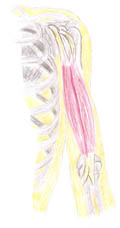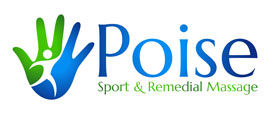
The biceps are very prominent in your upper arm – think Popeye for when the muscle becomes over-developed. In reality there are 2 biceps in your arm, a short head and long head, giving a total of 4 attachment points between your shoulder and elbow and producing 2 muscle bellies.
Where are they?
Origin: The short head attaches to the coracoid process of the scapula, whilst the long head attaches to the supraglenoid tubercle of the scapula. The important thing to note here is that the biceps brachii attach to your shoulder blade.
Insertion: Tuberosity of the radius and aponeurosis of the biceps brachii. (Aponeuroses are sheets of fibrous membranes that act like fascia to bind muscles together to connect them to bone)
What do they do?
The biceps brachii flex the elbow and shoulder joint and suppinate the forearm (ie when you turn a door knob to open it). Basically, anything you do with your arm, from picking up an object to bringing food to your mouth, will involve the biceps.
Flexing your elbow is the most common way to see your biceps pump up to give your upper arm definition.
Common injuries involving the biceps brachii
Sports such as boxing, climbing, lifting weights or rowing have actions that will involve the biceps so can create injuries.
Injuries for the biceps brachii can include overuse injuries (ie of the long head tendon), dislocation (long head) or tendon tears. Overuse injuries are usually secondary to a shoulder injury involving impingement or instability and they can become degenerative in nature. Tears in the biceps tendons can sometimes require surgery.
One of the most common injuries involve carrying loads that are too heavy, especially if they are lifted very suddenly. Injuries at the elbow, such as tennis or golfer’s elbow, will undoubtedly effect the biceps – remember that they are involved in supination/rotation of the forearm.
Strengthening and stretches for the Biceps Brachii
NB: always seek professional and/or medical advice when undertaking exercise.
It is important to follow a carefully planned recovery/rehabilitation program to ensure good recovery from injury.
Bicep curl is the most common strengthening exercise but care should be taken to ensure good technique and that any weights being used are appropriate and not too heavy.
Kneeling forearm stretch: Kneel on all fours. Your forearms (and wrists) should be facing forwards with your hands pointing back towards your kneed. Move slowly back before returning to your starting position. Depending on where your bicep muscles are feeling most tight, you should feel this stretch more in either your forearms or your upper arms.
21 July 2016
